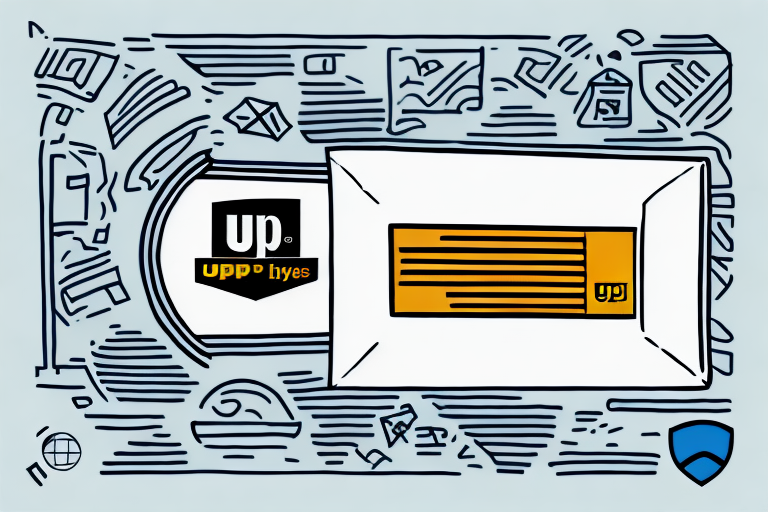Understanding Flat Rate Shipping Rates for UPS
In the competitive world of shipping logistics, understanding the various methods available is crucial for businesses of all sizes. One option that has gained significant traction in recent years is flat rate shipping. Among the carriers offering this service, UPS stands out as an industry leader. According to the UPS Supply Chain Report, the adoption of flat rate shipping has increased by 15% over the past year, highlighting its growing importance in modern logistics.
What is Flat Rate Shipping and How Does it Work?
Flat rate shipping is a shipping service where a fixed fee is charged based on the package’s size and destination zone, rather than its weight or distance traveled. This pricing model allows businesses to save money, especially when sending heavy or bulky items. Flat rate shipping rates are predetermined for different box sizes and envelopes, which can be purchased directly from the carrier.
With UPS flat rate shipping, the carrier offers a variety of box sizes tailored to meet the diverse needs of businesses. You can explore the available options on the UPS website, select the box that best fits your shipping requirements, and print the shipping labels online. Once labeled, the package is ready to be dispatched.
One of the main advantages of flat rate shipping is the predictability of costs, which aids businesses in budgeting and financial planning. Additionally, UPS may prioritize these packages for certain destinations, potentially leading to faster delivery times. However, it's essential to consider that flat rate shipping may not always be the most economical choice for lighter packages or those destined for nearby locations.
Benefits of Using Flat Rate Shipping with UPS
Choosing UPS flat rate shipping offers several key advantages for businesses:
- Predictable Shipping Costs: Flat rate shipping allows businesses to calculate shipping costs in advance, eliminating unexpected fees and facilitating accurate budgeting.
- Cost Savings on Heavy or Bulky Items: Since rates are based on box size rather than weight, businesses can save significantly when shipping large or heavy goods.
- Convenience: UPS provides a range of box sizes that can be easily printed and prepared for shipment online, streamlining the shipping process.
- Priority Handling: Flat rate packages may receive prioritization during transit, potentially resulting in faster delivery times for certain destinations.
- Reliable Tracking and Delivery Confirmation: UPS's robust tracking system ensures that both businesses and customers can monitor shipments, enhancing trust and customer satisfaction.
By leveraging these benefits, businesses can enhance their shipping efficiency, reduce costs, and improve customer experiences.
Factors That Affect Flat Rate Shipping Costs with UPS
While flat rate shipping with UPS offers cost predictability, several factors can influence the total shipping cost:
- Box Size: UPS offers various flat rate box sizes, each with its own fixed rate. Larger boxes come with higher shipping fees, so selecting the appropriate size based on your package dimensions is crucial for cost efficiency.
- Destination Zone: Shipping rates vary based on the destination zone. Longer distances or international destinations typically incur higher shipping costs within the flat rate structure.
- Package Weight: Although flat rate shipping is primarily based on box size and destination, packages exceeding the maximum weight limit for a chosen box may require an upgraded shipping option or incur additional fees.
- Prohibited Items: Certain items, such as hazardous materials or live animals, are restricted and cannot be shipped using UPS flat rate boxes. It's essential to review UPS's shipping restrictions to ensure compliance.
Understanding these factors allows businesses to make informed decisions when selecting flat rate shipping options, ensuring both cost-effectiveness and compliance with UPS policies.
How to Choose the Best Flat Rate Shipping Option for Your Business
Selecting the most suitable UPS flat rate shipping option involves evaluating several key aspects of your business's shipping needs:
- Assess Package Size and Weight: Determine the dimensions and weight of the items you frequently ship. Choose a box size that accommodates your products without excessive space or weight penalties.
- Consider Destination Zones: Analyze where your shipments are headed. Understanding the destination zones can help you predict shipping costs accurately and choose the most economical option.
- Review Shipping Restrictions: Familiarize yourself with UPS's shipping restrictions to ensure that your products can be shipped using flat rate boxes. Certain items may require alternative shipping methods.
- Evaluate Delivery Timeframes: Consider how quickly your customers expect to receive their orders. While flat rate shipping can offer competitive delivery times, expedited shipping options may be necessary for urgent deliveries.
- Compare with Other Shipping Methods: Analyze standard weight-based shipping rates alongside flat rate options to determine which method offers better value for your specific shipping patterns.
By thoroughly evaluating these factors, businesses can select the optimal flat rate shipping option with UPS that aligns with their operational requirements and budgetary constraints.
Tips for Saving Money on Flat Rate Shipping with UPS
Maximizing savings on UPS flat rate shipping involves strategic planning and optimization:
- Purchase in Bulk: Buying flat rate boxes in bulk can reduce the cost per unit, offering significant savings over time.
- Utilize Shipping Software: Implementing effective shipping software can help compare rates across different carriers and identify the most cost-effective shipping options for your needs.
- Optimize Package Weight and Dimensions: Reducing the size and weight of your packages by selecting appropriate box sizes and minimizing cushioning materials can lower overall shipping costs.
- Take Advantage of UPS Discounts and Promotions: UPS offers various discounts for businesses that ship frequently or in large volumes. Regularly monitoring and utilizing these promotions can lead to cost reductions.
- Negotiate with UPS: If your shipping volumes are substantial, consider negotiating customized rates with UPS to align with your business’s specific shipping requirements.
Implementing these strategies can lead to significant cost savings, enhancing your business's profitability while maintaining efficient shipping practices.
Understanding the Differences Between UPS Flat Rate and Other Shipping Methods
UPS offers a variety of shipping methods beyond flat rate options, each tailored to different business needs. Understanding these alternatives helps in selecting the most appropriate service:
- Priority Shipping: Priority Shipping provides faster delivery times compared to standard services, often within 1-3 business days domestically. This option is ideal for time-sensitive shipments but comes at a higher cost.
- Ground Shipping: Ground Shipping is a budget-friendly option suitable for non-urgent deliveries. It typically offers slower transit times but is cost-effective for heavy or bulky items not requiring expedited delivery.
- Next Day Air: Next Day Air ensures delivery by the next business day, making it the fastest UPS service available. This is ideal for critical deliveries but is the most expensive shipping option.
In contrast, flat rate shipping focuses on cost predictability by charging a fixed rate based on box size and destination zone, irrespective of the shipment’s weight. This makes it a compelling option for businesses shipping items that are heavy or bulky, as long as they fit within the designated flat rate boxes.
Choosing between flat rate shipping and other UPS services requires evaluating factors such as delivery speed, cost, package weight and size, and the specific needs of your customers.
How to Calculate Your Flat Rate Shipping Costs with UPS
Calculating your UPS flat rate shipping costs is a straightforward process that ensures transparency and predictability in your shipping expenses. Follow these steps to determine the cost:
- Select the Appropriate Flat Rate Box: Determine the size of the package you intend to ship and choose the corresponding UPS flat rate box. UPS offers a range of box sizes, each with its own fixed rate.
- Identify the Destination Zone: UPS categorizes shipping destinations into zones based on distance. Use the UPS Zone Chart to identify the zone for your destination address.
- Determine the Flat Rate Shipping Cost: Visit the UPS Flat Rate Shipping page to view the rates associated with your selected box size and destination zone.
- Check for Additional Fees: Ensure that your package complies with UPS’s flat rate shipping restrictions to avoid any additional fees. Packages exceeding weight limits or containing restricted items may require alternative shipping options.
By following these steps, businesses can accurately calculate flat rate shipping costs, facilitating efficient budgeting and financial planning. It's also advisable to regularly review UPS’s flat rate shipping rates, as they may be subject to change based on economic factors and operational costs.
Common Mistakes to Avoid When Using Flat Rate Shipping with UPS
Maximizing the benefits of UPS flat rate shipping requires awareness of potential pitfalls. Avoiding these common mistakes can save your business time and money:
- Choosing the Wrong Box Size: Selecting a box that is too large can lead to unnecessary shipping costs. Conversely, using a box that is too small may result in damaged goods or additional packaging costs.
- Ignoring Shipping Restrictions: Attempting to ship prohibited items, such as hazardous materials or live animals, using flat rate boxes can result in package rejection and potential fines.
- Overlooking Weight Limits: Exceeding the maximum weight limit for a flat rate box may require upgrading to a more expensive shipping option or incurring additional fees.
- Inadequate Packaging: Failing to properly cushion and secure items within the flat rate box can lead to damaged products and customer dissatisfaction.
- Neglecting to Compare Shipping Options: Relying solely on flat rate shipping without comparing it to other UPS services may result in higher costs when alternative methods are more economical for certain shipments.
- Not Tracking Shipments: Failing to utilize UPS’s tracking and delivery confirmation services can lead to uncertainty regarding shipment status and delivery issues.
By being mindful of these common mistakes, businesses can optimize their use of UPS flat rate shipping, ensuring efficient and cost-effective shipping operations.
Comparing UPS Flat Rate Shipping to Other Major Carriers' Options
While UPS offers robust flat rate shipping options, it's essential to compare these services with those provided by other major carriers to determine the best fit for your business:
- FedEx: FedEx provides FedEx One Rate, its flat rate shipping program, which offers similar fixed-rate options based on box size and destination. FedEx One Rate is known for its reliable delivery times and comprehensive tracking services, though pricing may vary depending on specific shipping needs.
- USPS: The United States Postal Service (USPS) offers Priority Mail Flat Rate, which provides fixed pricing for shipping within the United States regardless of weight (up to 70 lbs) or distance. USPS is often praised for its affordability and extensive delivery network, making it a popular choice for small businesses and e-commerce platforms.
When comparing UPS Flat Rate Shipping with FedEx and USPS, consider the following factors:
- Pricing: Evaluate the cost per shipment based on your average package sizes and shipping destinations to determine which carrier offers the most competitive rates.
- Delivery Speed: Compare the delivery timelines of each carrier to ensure they align with your customers' expectations and business requirements.
- Service Reliability: Assess each carrier's track record for on-time deliveries and package handling to ensure reliability and customer satisfaction.
- Additional Features: Consider value-added services such as insurance options, tracking capabilities, and customer support when selecting a carrier.
By conducting a comprehensive comparison, businesses can select the flat rate shipping service that best meets their operational needs and budgetary constraints.
Conclusion
Overall, flat rate shipping with UPS is a compelling option for businesses aiming to reduce shipping costs while maintaining predictability and reliability. By meticulously evaluating the size, weight, and destination of packages, businesses can select the most suitable flat rate option, enhancing operational efficiency and customer satisfaction. Additionally, leveraging bulk purchasing and optimizing packaging can further maximize savings.
However, it's crucial to recognize that flat rate shipping may not always be the most economical choice, particularly for lightweight or small packages where standard weight-based shipping rates might offer better value. Therefore, it's advisable to regularly compare various shipping methods and rates to identify the most cost-effective solutions tailored to your specific shipping needs.






















